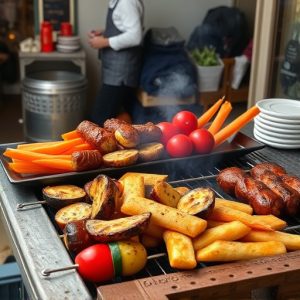Choosing the right cut (spare or baby back ribs), dry brining, creating the perfect dry rub and barbecue sauce, and a two-step baking method are key to achieving tender, juicy baked BBQ ribs. Follow these steps for an ideal Baked BBQ Ribs Recipe with delicious sides like coleslaw, grilled veggies, and crispy fries.
“Indulge in the mouthwatering aroma of perfectly baked BBQ ribs, coated in a rich, tangy sauce. This comprehensive guide takes you on a journey from selecting the ideal cut for your ribs to mastering the art of dry brining and creating an irresistible dry rub blend. Learn the science behind the perfect barbecue sauce and discover baking techniques that ensure tender, juicy ribs every time. We’ll also share saucing strategies, resting tips, and side dishes to complete this delectable Baked BBQ Ribs Recipe.”
- Selecting the Perfect Cut for Baked BBQ Ribs
- Dry Brining: Unlocking Flavor Potential
- The Science Behind the Perfect Barbecue Sauce
- Creating a Mouthwatering Dry Rub Blend
- Baking Techniques for Tender, Juicy Ribs
- Achieving the Right Saucing Strategy
- Resting and Serving Tips for Optimal Taste
- Accompanying Side Dishes to Complete the Meal
Selecting the Perfect Cut for Baked BBQ Ribs
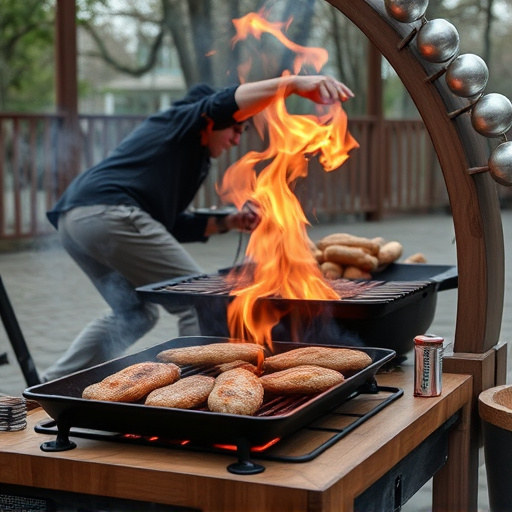
When it comes to baking BBQ ribs, choosing the right cut is key to achieving that tender, juicy perfection. The most popular option for a baked BBQ ribs recipe is often the spare rib or baby back rib cuts. These cuts have a good balance of meaty bones and lean meat, ensuring your ribs stay moist during the baking process. Spare ribs, with their large surface area, allow for better browning and caramelization of the barbecue sauce, resulting in an incredibly flavorful finish.
For a successful baked BBQ ribs recipe, look for ribs that are at least 1/2 inch thick, ensuring they have enough meat to hold together while baking. Properly selected ribs will offer a delightful blend of flavors from the sauce and the slow-roasting process, making them the star of your meal.
Dry Brining: Unlocking Flavor Potential
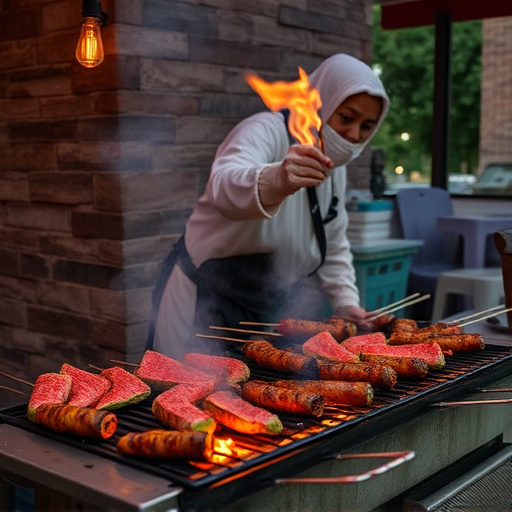
Dry brining is a simple yet powerful technique that significantly enhances the flavor of baked BBQ ribs recipes. By curing the meat with salt and spices, this method draws out moisture, resulting in tender, succulent ribs. The process begins by rubbing a generous amount of coarse salt—along with any desired herbs or spices—over the rib rack. This mixture not only adds flavor but also creates a protective layer that helps keep the ribs moist during the baking process.
The dry brining period allows the salt to penetrate the meat, breaking down proteins and enhancing its overall taste profile. The longer the ribs are brined (typically 1-2 days), the more intense the flavors become. After this initial step, the ribs are rinsed, allowing the surface to dry slightly before applying your favorite barbecue sauce for a lip-smacking finish.
The Science Behind the Perfect Barbecue Sauce
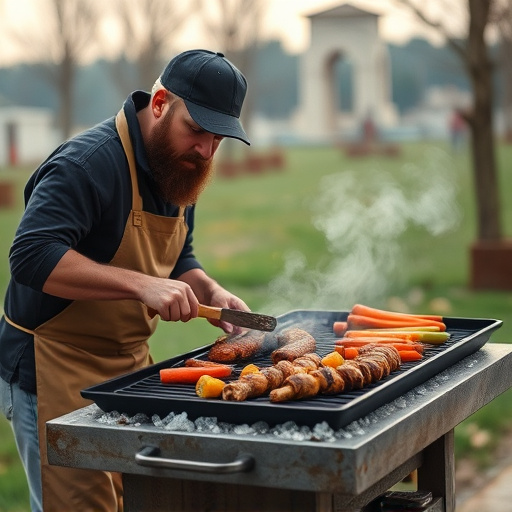
The perfect barbecue sauce is a harmonious blend of science and culinary art. At its core, it involves understanding the chemical reactions that occur when different ingredients combine. For instance, tomatobase sauces benefit from the Maillard reaction—a chemical process that occurs when amino acids and sugars interact at high temperatures, creating complex flavors and colors. This reaction is what gives baked BBQ ribs recipe their signature rich, caramelized notes.
Additionally, acidity plays a vital role in balancing the sauce’s overall taste profile. Common acidifying agents like vinegar or lemon juice not only add tanginess but also act as a preservative, ensuring your creation lasts longer. The thickening agent used—whether it’s pureed fruits, cornstarch, or pectin—is another crucial aspect, as it controls the sauce’s consistency, making it neither too runny nor too stiff. This precision in crafting the perfect BBQ sauce enhances the overall dining experience, especially when paired with tender, slow-cooked baked BBQ ribs.
Creating a Mouthwatering Dry Rub Blend
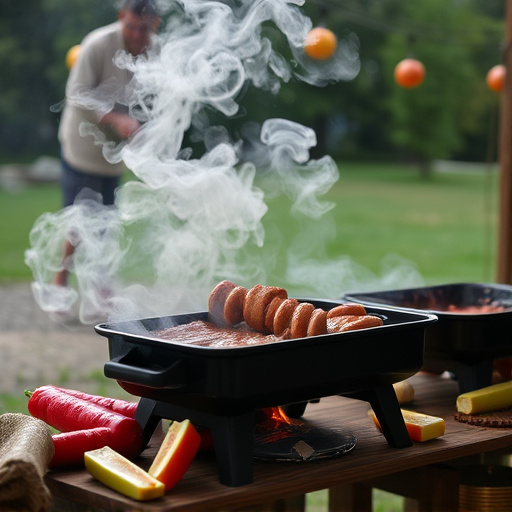
Creating a mouthwatering dry rub blend is the first step in crafting exquisite baked BBQ ribs. This spice mix adds a complex layer of flavor that complements the tender, succulent ribs perfectly. Start by combining brown sugar, paprika, garlic powder, onion powder, salt, pepper, and cayenne pepper in a bowl. The brown sugar caramelizes during baking, imparting a deep, sweet note, while paprika and garlic powder contribute earthy, smoky flavors. Adjust the spiciness level to your preference by tweaking the amount of cayenne. Once you’ve achieved the desired balance, rub this blend generously over the ribs before baking them in the oven for a truly unforgettable BBQ experience.
Baking Techniques for Tender, Juicy Ribs
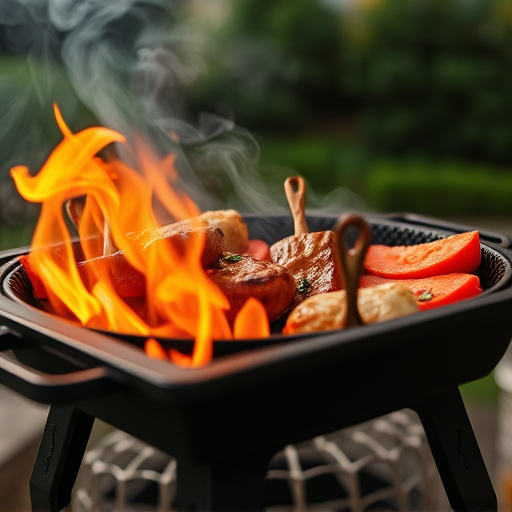
To achieve tender, juicy baked BBQ ribs, understanding the art of slow cooking is key. The process typically involves a two-step method: dry rubbing and moistening. First, rub your ribs generously with a blend of spices – brown sugar, paprika, garlic powder, salt, and pepper are common choices – massaging it into the meat to infuse flavor. This step is crucial for developing a rich, savory taste that will permeate every bite.
After allowing the dry rub to set for an hour or so, bake your ribs at a low temperature (around 275°F/135°C) until they’re nearly tender. This slow and steady cooking process ensures the ribs stay moist and prevents them from drying out. Once the ribs are nearly done, brush on your favorite barbecue sauce – a sticky, sweet blend of ketchup, vinegar, brown sugar, and spices – for an extra layer of flavor. Continue baking until the ribs reach your desired tenderness, allowing the sauce to caramelize and create a delectable glaze.
Achieving the Right Saucing Strategy
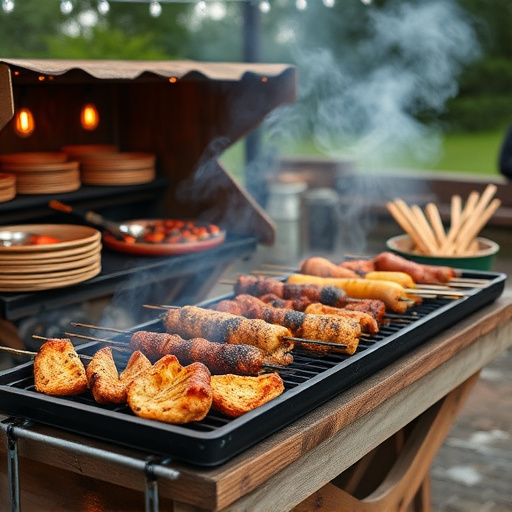
To achieve the perfect saucy ribs in your baked BBQ ribs recipe, timing and technique are key. Start by preheating your oven to the ideal temperature, usually around 300-350°F (175-180°C), allowing it to reach its peak before placing the ribs inside. This ensures even cooking and a crispier crackling skin.
Apply the barbecue sauce liberally but strategically. For best results, brush on a thick layer during the last 20 minutes of baking. This prevents burning and allows the sauce to caramelize, creating a delicious, glossy finish. Remember, less is not more when it comes to flavor; a generous coating will enhance the ribs’ taste without overpowering them.
Resting and Serving Tips for Optimal Taste
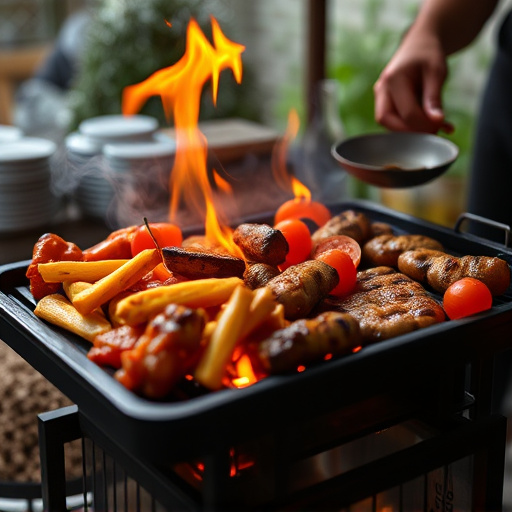
After slow-roasting your baked BBQ ribs until they’re tender and juicy, it’s crucial to allow them to rest for 10-15 minutes before serving. This resting period lets the juices redistribute throughout the meat, ensuring each bite is incredibly flavorful. Serving straight from the oven can result in drier ribs.
When ready to serve your mouthwatering baked BBQ ribs recipe, consider pairing them with classic side dishes like coleslaw, grilled corn on the cob, and crispy fries. The rich barbecue sauce on the ribs will complement these sides nicely. Don’t be shy with the extra sauce – it’s what makes these ribs truly special.
Accompanying Side Dishes to Complete the Meal
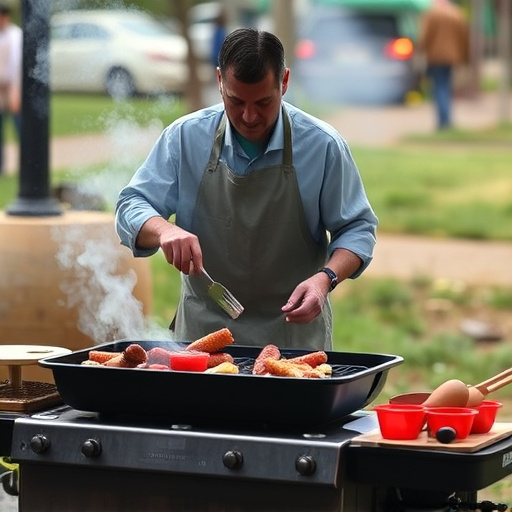
When serving baked BBQ ribs, there are several side dishes that can complement the rich barbecue sauce and enhance the overall dining experience. Crispy fried potatoes, such as French fries or potato wedges, offer a hearty contrast to the tender ribs. For a healthier option, consider grilled vegetables like asparagus or zucchini, which pair well with the smoky flavors of the BBQ ribs. Colorful salads, particularly those with a tangy vinaigrette dressing, can add freshness and balance to the meal. Corn on the cob, either boiled or grilled, is another popular side that brings a delightful sweetness to the table. These choices not only satisfy different taste preferences but also contribute to a well-rounded and satisfying course.
